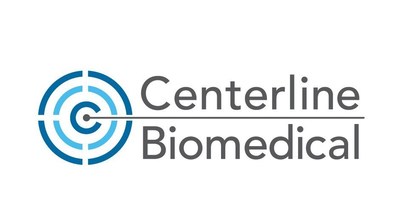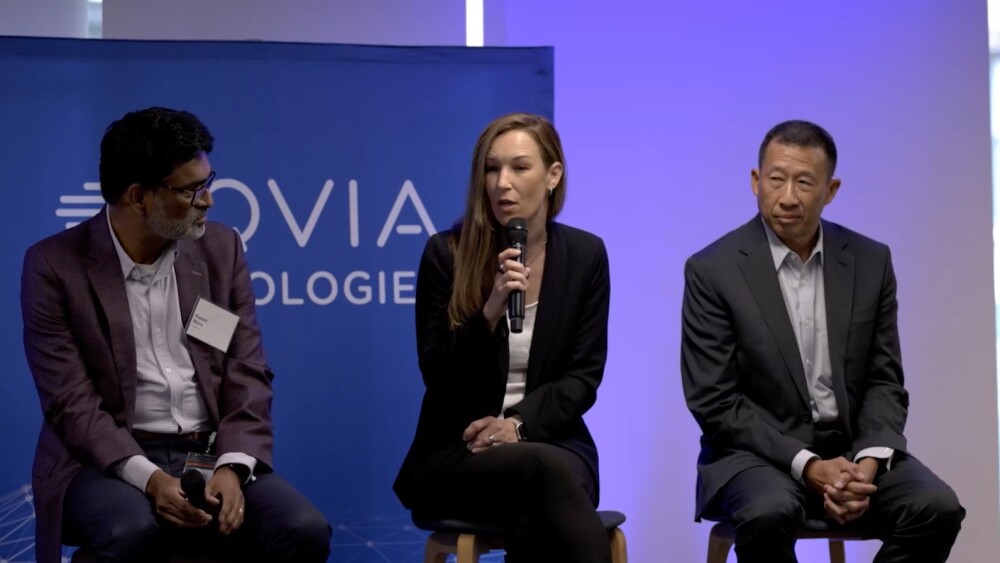Centerline Biomedical, Inc. announced Thursday the completion of the second in a series of structural heart navigation animal studies.
Centerline Biomedical executes animal study demonstrating 4D augmented reality navigation through complex structures of the heart
CLEVELAND , May 19, 2022 /PRNewswire/ -- Centerline Biomedical, Inc. (Centerline) announced Thursday the completion of the second in a series of structural heart navigation animal studies. Physicians from Cleveland Clinic's top-ranked Heart, Vascular and Thoracic Institute evaluated the feasibility of applying the company's augmented reality image guidance technology to navigate structures in a beating heart. Structural heart disease is a multi-billion-dollar market and one of the fastest growing segments within healthcare.
As the company grows the R&D pipeline for its novel 3D-GNC (guidance, navigation and control) technology, it has made structural heart disease a focus because of the limitations of x-ray fluoroscopy and the current need for multiple concomitant imaging modalities to complete certain procedures. Not only is navigating complex cardiac structures and device placement challenging, but the reliance on fluoroscopy also creates radiation exposure risk to the patient, physician, and staff. The investigational 4D-GNC technology builds upon the company's flagship IOPS® product with four-dimensional structural mapping and augmented reality guidance through the heart.
Azeem Latib, MD, Section Head of Interventional Cardiology and Structural Heart Disease at Montefiore Health System commented, "Growth in this clinical field is advancing at a rapid pace, but the unsolvable piece has been fully integrating medical devices with enhanced navigation to improve safety and outcomes."
The team of physicians and engineers were able to accomplish a number of key interventional tasks during this live animal study, including transseptal puncture to cross from the right to the left side of the heart, navigating catheters into all four chambers, and accessing key structures including the left atrial appendage and pulmonary veins. The navigation technology is meant to work in tandem with fluoroscopic X-ray imaging, but many of these tasks were accomplished using the 4D-GNC prototype alone.
The precise real-time navigation through a moving structural heart map, synchronized to the EKG signal, made it straightforward to perform complex tasks, expressed Vikash Goel, Centerline Biomedical's Chief Technology Officer. Rishi Puri MD, PhD, a Coronary and Structural Heart Interventional Cardiologist at the Cleveland Clinic's Heart, Vascular and Thoracic Institute, serves as Principal Investigator for this study and plays a key role guiding the company's Structural Heart Disease strategy as a Scientific Advisor. "Dr. Puri was able to effortlessly navigate the entire heart using a novel, sensorized steerable catheter, changing its shape on the fly, without relying on fluoroscopy or echocardiography even within difficult-to-reach structures such as the right-sided pulmonary veins," commented Vikash. "This success gives us confidence that our technology will scale to a broad range of specialists to allow navigation with minimal radiation, minimal contrast media and minimal dependence on concomitant imaging modalities".
Centerline is rapidly growing as it commercializes its FDA-cleared Intra-Operative Positioning System (IOPS®) product at leading US hospital systems. "The remarkable accomplishments witnessed today exceeded all expectations and will certainly prove to be a watershed moment for the company," said Phil Rackliffe, CEO. "Moments like these are only enabled by high-performing teams, acting on market insights, focused on a shared mission."
*Drs. Latib and Puri are consultants for Centerline Biomedical.
![]() View original content to download multimedia:https://www.prnewswire.com/news-releases/centerline-biomedical-announces-successful-structural-heart-animal-study-301550430.html
View original content to download multimedia:https://www.prnewswire.com/news-releases/centerline-biomedical-announces-successful-structural-heart-animal-study-301550430.html
SOURCE Centerline Biomedical





